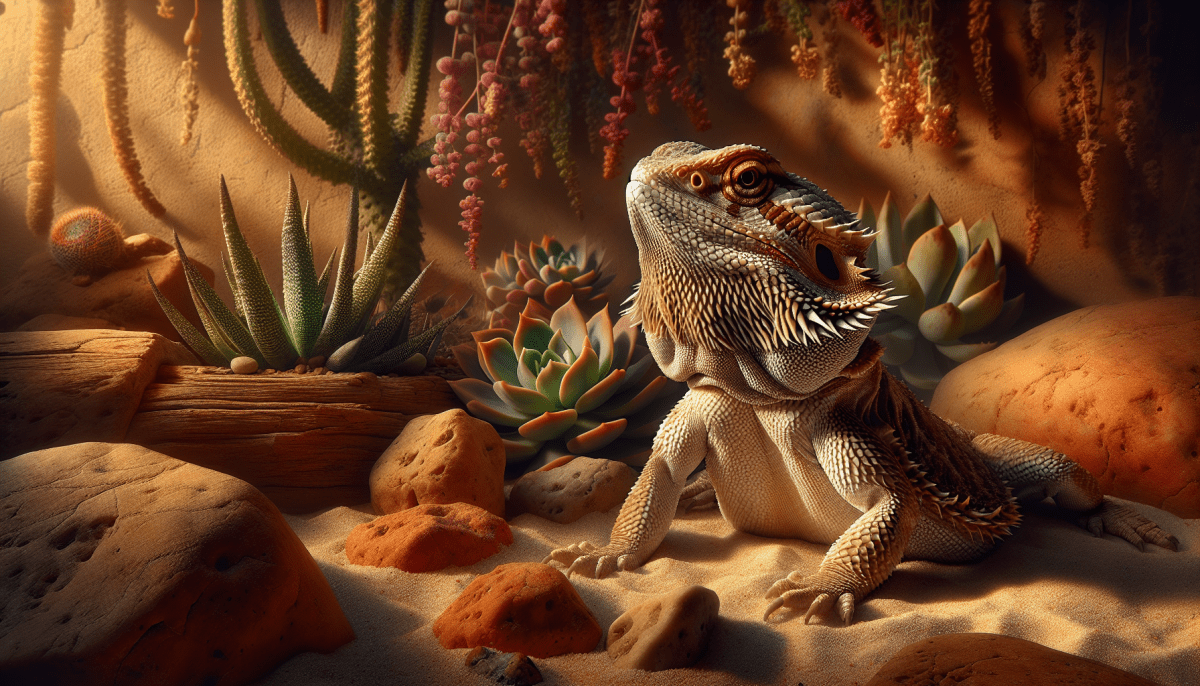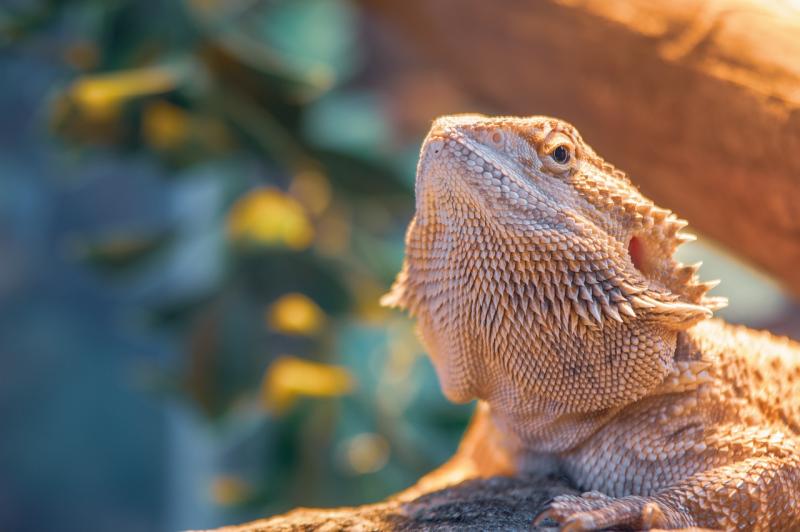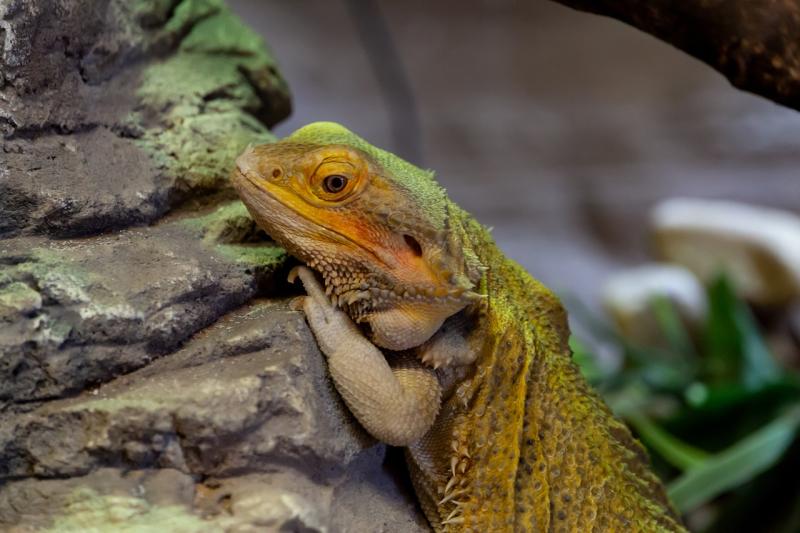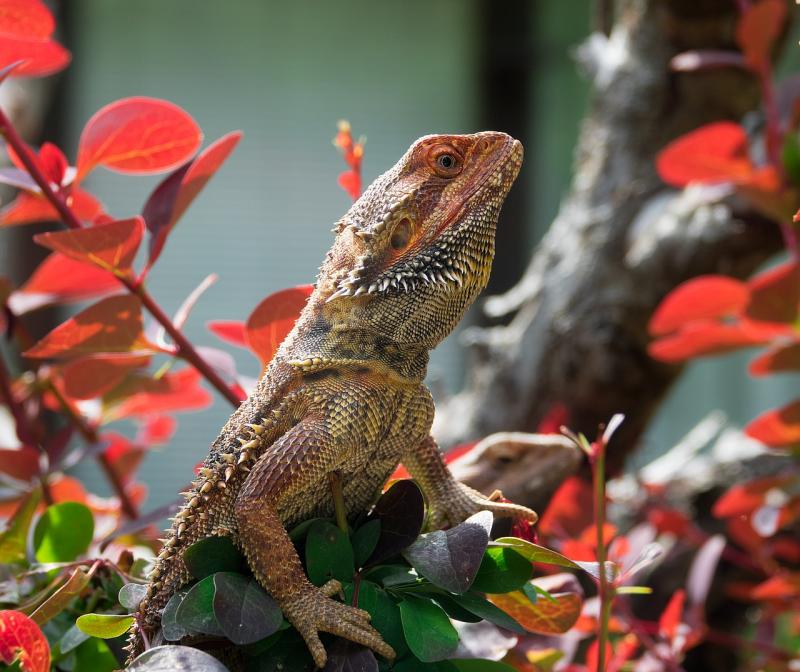Understanding Bearded Dragon Body Language: Clues for Interpretation
Bearded dragons, known for their unique appearance and docile nature, can exhibit a fascinating array of behaviors. As reptiles, they rely heavily on body language to communicate their needs, feelings, and intentions. By observing and interpreting their gestures and postures, we can gain deeper insights into their behavior and better respond to their needs. In this article, we will explore some key aspects of bearded dragon body language and delve into the clues they provide.
Head Bobbing: What's the Story?
One commonly observed behavior in bearded dragons is head bobbing. Often mistaken for aggression or territoriality, head bobbing can actually convey various messages depending on the context. Males, in particular, use head bobbing as a way to communicate their dominance or express interest in mating. When a male bobs its head with a slow, rhythmic motion, it is likely signaling its presence and attempting to assert dominance. On the other hand, a fast and intense head bobbing often indicates excitement and interest in a potential mate.
Arm Waving: A Friendly Gesture
If you notice your bearded dragon waving one of its front legs in the air, don't be alarmed. Arm waving is a commonly observed behavior that usually indicates non-threatening behavior or a friendly gesture. This behavior is commonly seen in both males and females. They may wave their arm when greeting fellow tank mates or their human caretakers. Arm waving can also be a sign of submission, especially when exhibited towards a more dominant individual. So, if your bearded dragon waves at you, consider it a positive interaction!
Open Mouth and Wide Puffs: Defending Territory
When a bearded dragon feels threatened or is defending its territory, it may display open-mouthed aggression combined with puffing itself up. This behavior is often accompanied by a darkening of the beard, hence the name "bearded dragon." By opening its mouth wide, the bearded dragon aims to intimidate the intruder or perceived threat. The wide puffs make the reptile appear larger, further enhancing its intimidating presence. This display is a clear indication that your dragon is feeling defensive or stressed. It's important to respect its boundaries and give it some space until it calms down.
Glass Surfing: Time for a Change
Have you ever noticed your bearded dragon repeatedly running along the glass walls of its enclosure? This behavior, known as glass surfing or glass dancing, can be an indication that your dragon is unhappy with its current environment. It could be a sign of boredom, inadequate temperature, or a lack of stimulation. By glass surfing, the bearded dragon is expressing its desire for a change of scenery or an adjustment to its surroundings. Consider evaluating your dragon's habitat and ensure it meets its needs to prevent excessive glass surfing.
Tail Movements: A Quirky Communication
Bearded dragons often communicate through tail movements, which can provide valuable insights into their current state. Rapid tail twitching can indicate excitement or a sign of annoyance. For instance, if your bearded dragon is being handled and its tail starts twitching rapidly, it might be a sign that it wants to be put down or is feeling uncomfortable. On the other hand, slow and gentle tail movements can suggest relaxation or contentment. Paying attention to these subtle cues can help you understand your dragon's emotional state better.
In conclusion, bearded dragons have a complex and unique way of communicating through body language. Understanding their head bobbing, arm waving, open-mouth and wide puffs, glass surfing, and tail movements can provide helpful clues for interpreting their needs and emotions. By observing and responding to these behaviors appropriately, you can ensure a harmonious and enriched environment for your beloved bearded dragon.
Cracking the Code: Deciphering Bearded Dragon Communication
Have you ever wondered what your bearded dragon is trying to tell you? While they may not be able to speak our language, these fascinating reptiles have their own unique ways of communicating with each other and with us. In this article, we will explore some of the key signals and behaviors of bearded dragons, giving you valuable insights into their communication patterns.
Head Bobbing
One of the most distinctive behaviors of bearded dragons is head bobbing. This rhythmic up-and-down movement of the head can signify a variety of things. In males, head bobbing is often seen during territorial displays or courtship. It signifies dominance and is a way for males to establish their territory or attract a mate. Females may also head bob, but it is usually less frequent and not related to courtship.
Arm Waving
Another interesting behavior you may observe in your bearded dragon is arm waving. This is when the dragon extends one of its front limbs and vigorously moves it up and down. Arm waving is commonly seen in both males and females and can serve multiple purposes. It can be a sign of submission, a way to communicate calmness, or a warning to other dragons to stay away.
Puffing Up
When a bearded dragon puffs up, it is a clear indication that they are feeling threatened or intimidated. By expanding their body and inflating their throat, they visually appear larger and more intimidating to potential predators or rivals. Puffing up is often accompanied by hissing or a display of their beard. If your bearded dragon is exhibiting this behavior, it's best to give them some space and ensure they feel safe.
Tail Curling
Bearded dragons use tail curling as a way to communicate contentment or relaxation. When a dragon wraps its tail around its body or bends it into a gentle curve, it demonstrates a state of comfort. This behavior is commonly observed when they are basking under their heat lamp or resting in a serene environment.
Color Changes
Bearded dragons have the remarkable ability to change their coloration, which can convey various messages. Darkening of their skin is often a response to stress or discomfort, while brightening and deepening of colors can indicate happiness or excitement. Paying attention to these color changes can provide valuable insights into your dragon's emotional state.
While these are some of the key behaviors to look out for, it's important to remember that each bearded dragon has its own unique personality. Getting to know your dragon's individual signals and body language will help you better understand their needs and preferences.
So, the next time you observe your bearded dragon engaging in behaviors like head bobbing, arm waving, puffing up, tail curling, or color changes, take a moment to crack the communication code. By recognizing and interpreting these signals, you can strengthen your bond with your scaly companion and provide them with a nurturing and enriched environment.
Unveiling the Enigma: Unraveling Bearded Dragon Behavior
Bearded dragons, known for their distinctive appearance and quirky behaviors, have long been a popular choice for reptile enthusiasts. These fascinating creatures are native to the arid regions of Australia and are renowned for their unique characteristics and intriguing behavioral patterns. In this article, we will delve into the world of bearded dragons and shed light on some of the mysteries surrounding their behavior.
Secret Signals: The Language of Bearded Dragons
Communication is a vital aspect of any living creature's existence. Bearded dragons, too, have their own unique way of expressing themselves. One of the most intriguing aspects of their behavior is the practice of "bearding." When a bearded dragon feels threatened or agitated, the skin underneath its chin and neck expands, revealing spiky scales resembling a beard. This gesture serves as a warning signal to potential predators or rival males, indicating that they should back off.
Another interesting aspect of bearded dragon behavior is their remarkable ability to change color. This phenomenon, called "thermoregulation," enables them to adjust their body temperature and absorb or reflect heat from their surroundings. They usually display darker colors when they need to warm up and become lighter to release excess heat. Additionally, bearded dragons also change color to express their emotional state, such as turning black when feeling stressed or anxious.
Mysterious Maladies: Understanding Bearded Dragon Health
Keeping bearded dragons healthy and thriving requires a thorough understanding of their physiological and behavioral well-being. One common health issue observed in these reptiles is metabolic bone disease (MBD). MBD occurs when bearded dragons lack crucial nutrients such as calcium and Vitamin D3, leading to weakened bones and deformities. Owners must provide a well-balanced diet enriched with calcium supplements and access to natural sunlight or specialized UVB lighting to prevent this condition.
Furthermore, bearded dragons have intricate digestive systems that require careful attention. These omnivorous reptiles have a high protein requirement, primarily consisting of insects, supplemented with leafy greens and vegetables. However, overfeeding of fatty insects or inadequate hydration can result in gastrointestinal upset and potential disease. Consistency in feeding and maintaining a proper habitat temperature is crucial to ensure their digestive health.
Nocturnal Natives: Bearded Dragons' Sleep Patterns
Unlike humans, bearded dragons are crepuscular creatures, meaning they are most active during dawn and dusk. As semi-desert inhabitants, they have adapted to these periods when temperatures are more tolerable. While bearded dragons do require sleep, their nocturnal habits may differ from other reptilian species.
It is essential for owners to provide a cozy and secure sleeping environment for their bearded dragons. This typically involves creating a dark and quiet space, free from any disturbances, where they can seek refuge and rest. Sleeping and resting routines can vary between individuals, and observing your pet's preferences and adjusting their habitat accordingly will contribute to their well-being and contentment.
In conclusion, delving into the world of bearded dragon behavior offers incredible insights into their captivating nature. Understanding their unique communication signals, ensuring their health and nutrition, as well as accommodating their natural sleep patterns, contribute to providing a suitable environment for these remarkable reptiles. As we continue to unravel the enigma that is the bearded dragon, we deepen our appreciation for their intricate biology and fascinating behaviors.



